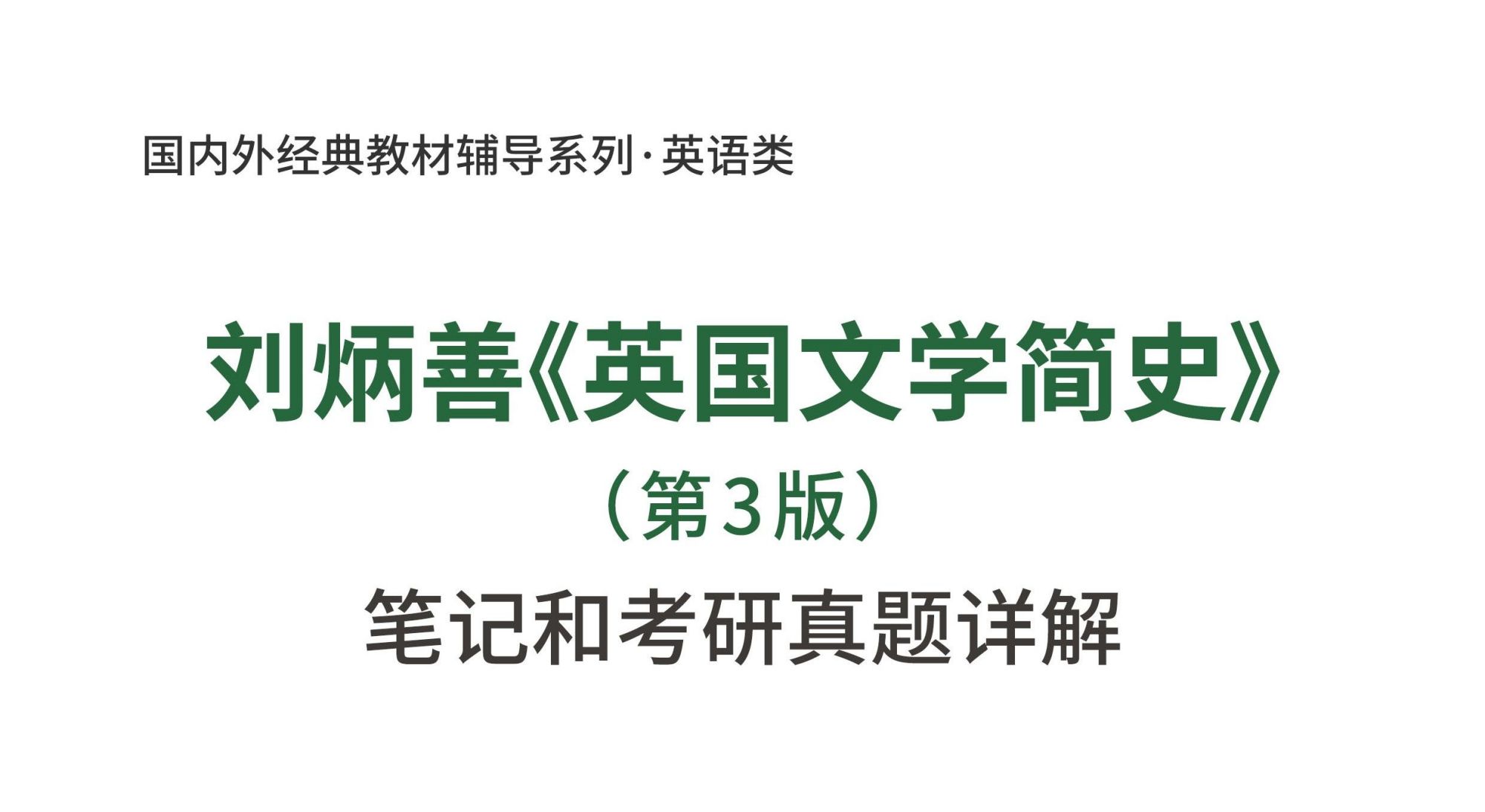刘炳善英国文学简史第3版笔记和考研真题
 第5章英国浪漫主义
第5章英国浪漫主义
5.1复习笔记
Ⅰ. Background Knowledge(背景知识)
At the end of the 18th century and the beginning of the 19th century, under the influence of the British Industrial Revolution and the French Revolution, romanticism became a new literary trend.
In 1798, the publication of Lyric Ballads written by William Wordsworth and Samuel Taylor Coleridge marked the beginning of the Romantic period. In 1832, Walter Scott’s death declared the end of the Romantic period.
18世纪末19世纪初,在英国工业革命和法国大革命的影响下,浪漫主义成为一种新的文学思潮应运而生。
1798年华兹华斯和柯勒律治共同编写的《抒情歌谣集》标志浪漫主义时期的开始,1832年沃尔特·司各特的去世则宣告浪漫主义时期的结束。
Ⅱ. Features of the Eighteenth-Century Literature(十八世纪文学特征)
(1) The period of Romanticism is the period of poetry Renaissance and the era of poetry. Romantics emphasize emotion, intuition and imagination. The common feature of their works is to express their dissatisfaction with capitalist society. People’s spiritual and emotional life draws the majority of their concern. Nature is significant in their works.
Romantic poets are mainly divided into two types: early Romantic poets, also known as Escapist Romantic poets, and late Romantic poets, also known as Active Romantic poets. The former includes Wordsworth, Coleridge and Southey, who are also known as Lake Poets. The latter includes Byron, Shelley and Keats. The early Romantic poets mainly recalled the happy old England. They tend to regard nature as a spiritual refuge because they fear the impending industrialism and the nightmarish urban industrialization. The late Romantic poets expressed their desire to establish a class accompanied by capitalism and live in an ideal society without exploitation and oppression.
(2) The prose writers of this period include Lamb, Hazlitt, De Quincey and Hunt.
(3) The only novelist in the Romantic period was Walter Scott. His historical novels are a composite of the romantic atmosphere and a realistic depiction of historical background and common people’s life. Scott marked the shift from romanticism to Realism.
(1)浪漫主义时期是诗歌复兴时期。浪漫主义时期是诗歌的时代。浪漫主义者强调的是情感,直觉和想象。他们作品的共同特征是表达对资本主义社会的不满。他们更注意的是人的精神和感情生活层面,大自然在他们的作品中扮有重要角色。
浪漫主义诗人主要分为两类:早期浪漫主义诗人,也叫消极浪漫主义诗人和晚期浪漫主义诗人,也叫积极浪漫主义诗人。前者包括华兹华斯,柯勒律治和骚赛,这三个人也被称作湖畔派诗人。后者包括拜伦,雪莱和济慈。早期浪漫主义诗人主要回忆快乐的旧英格兰时代。他们往往将大自然作为精神上的避难所,因为他们惧怕即将到来的工业主义和如同噩梦的城市工业化。晚期浪漫主义诗人则表达了希望建立一个同资本主义相伴而生的阶级,生活在没有剥削压迫的理想社会的渴望。
(2)这一时期的散文家有兰姆,哈兹里特,德·昆西和亨特。
(3)浪漫主义时期唯一的一位小说家是瓦尔特·司各特。他的历史小说将浪漫氛围和对历史背景及人们生活的现实描写结合起来。司各特是从浪漫主义向现实主义过渡的人物。